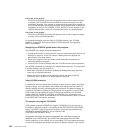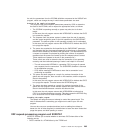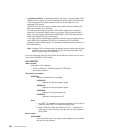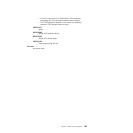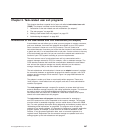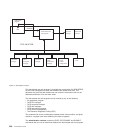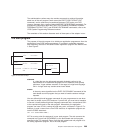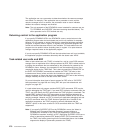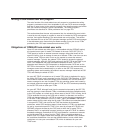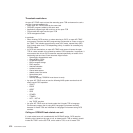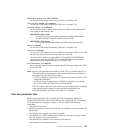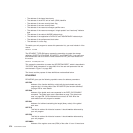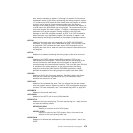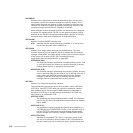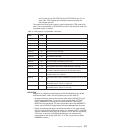The application can use a parameter to determine whether the resource manager
was called. For example, if the application sets a parameter to zero and the
resource manager sets it to nonzero, the parameter value on return indicates
whether the resource manager was invoked.
Note: The only operands of the DFHRMCAL macro intended for customer use are
TO, RTNABND, and SUPPEDF (the latter two being described below). The
other operands are for CICS internal use only.
Returning control to the application program
If you specify RTNABND=YES in the DFHRMCAL macro, control returns to the
application program when the task-related user exit is not available, for example,
because it is not enabled or started. Note that for assembler-language application
programs, a negative value in register 15 signals to the application program that
control has returned because the exit is not available. The task-related user exit
program can use positive values (including zero) in register 15 to pass resource
manager response codes to the application program.
If you do not specify RTNABND=YES and the task-related user exit is not available,
the application program terminates abnormally with the abend code ‘AEY9’.
Task-related user exits and EDF
When a task-related user exit (TRUE) is invoked for a call to a non-CICS resource
manager from an application that is being monitored by EDF, EDF’s default action is
to display the parameters that are addressed by the parameter list passed by the
DFHRMCAL macro. However, the parameter list can be transformed into a more
meaningful display by the TRUE itself. This is done by specifying FORMATEDF on
the EXEC CICS ENABLE command that enables the TRUE. The latter is then
invoked several times, before and after the invocation to satisfy the call to the
resource manager, to format the data to be displayed by EDF and to deal with any
changes made by the user to the data on the EDF screen.
For more information about how to format screens for EDF, refer to “CICS EDF
build parameters” on page 283 and “Using EDF with your task-related user exit
program” on page 301.
If a task-related user exit program contains EXEC CICS commands, EDF may be
useful in debugging the TRUE itself. If you want EDF to display commands from the
TRUE, you must specify the EDF option when the TRUE program is translated. The
standard EDF screens for the CICS commands are then displayed between the
“About to Execute” and “Command Execution Complete” screens for the call to the
resource manager. However, as EDF is primarily an application debugging tool and
the CICS commands within the TRUE would not generally be of interest to the
application programmer, the TRUE program is normally translated with the
“NOEDF” option; in this case, screens for CICS commands within the TRUE are
suppressed.
Note: If you specify SUPPEDF=YES on the DFHRMCAL macro, the “About to
Execute” and “Command Execution Complete” screens relating to
DFHRMCAL’s invocation of the TRUE are suppressed; in other words,
DFHRMCAL becomes “invisible” to EDF. (Specifying SUPPEDF=YES has no
effect in determining whether EDF displays EXEC CICS commands within
the TRUE—the factors governing this are as described above—but it does
suppress the display of parameters passed to the TRUE.)
270 Customization Guide



